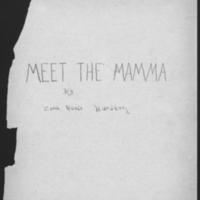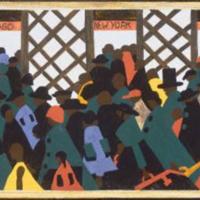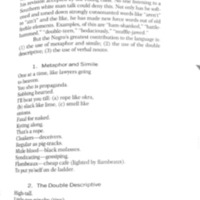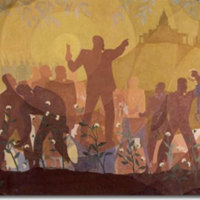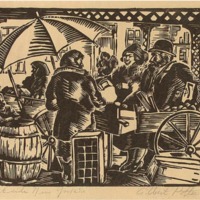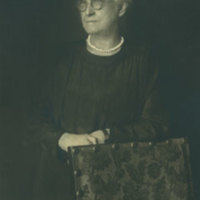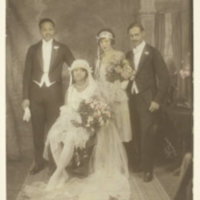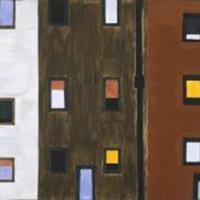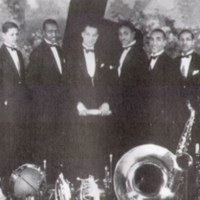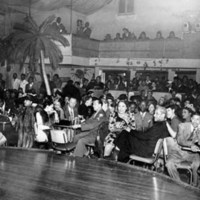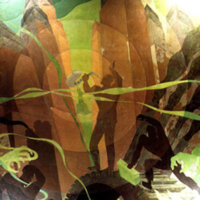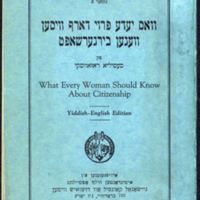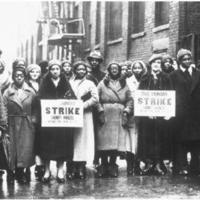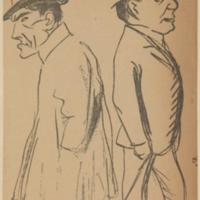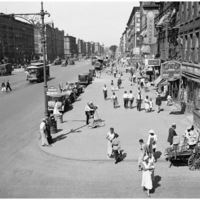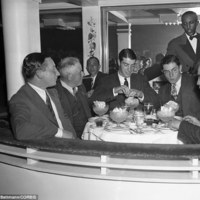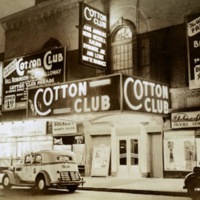Browse Items (25 total)
- Collection: 1920s
Sort by:
Meet the Mamma: A Musical Play in Three Acts
This is the cover to an experimental musical that Zora Neale Hurston wrote in 1925, early in her career. It was interesting to see another play written to by Hurston. Unlike Hurston's play in Fire!!, this musical takes place in New York City. To see…
Tags: 1920s, Harlem Renaissance
Zora Neale Hurston in Eatonville, Florida
Depicted here is a picture of Zora Neale Hurston in her hometown of Eatonville, Florida. Many of her short stories and novels were said to be based off of Eatonville. Eatonville is a majority African American community, supplying Hurston a plethora…
Tags: 1920s, Harlem Renaissance
New York's Lower East Side
This painting by Albert Potter appeared very informative to me as it so vividly depicts New York's Lower East Side. During the beginning of twentieth century, the Lower East Side was essentially the main area where a large amount of Jewish…
Wedding Party of Four
This photo depicts two young black couples dressed on what can be assumed their wedding day. James Van Der Zee, the photographer of this photo, was well known during the Harlem Renaissance. He documented the portraits of the African Americans that…
Tags: 1920s, Harlem Renaissance
Cotton Club Orchestra
The photo featured here is the orchestra that played at the infamous Cotton Club in Harlem. As Langston Hughes mentioned in his reflective piece about Harlem Renaissance, the Cotton Club was a club exclusively for white patrons in the middle of…
Tags: 1920s, Cotton Club, Harlem Renaissance
Laws for Granting Citizenship to Women
"Vos Yede Froy Darf Visen Vegen Birgershaft", which directly translates to "What Every Woman Should Know about Citizenship." The book is written in both Yiddish and English. This information booklet was made in 1926 by the National Council of Jewish…
Broadway Contrasts. George Beban and Holbrook Blinn.
Below is a image that is titled "Broadway Contrasts. George Beban and Holbrook Blinn." and it features two men back-to-back who were famous actors at the time. The man on the right is Holbrook Blinn who looks more business dressed with a rounded hat…
Tags: 1870s, 1920s, Broadway, Gilded Age, Men
Dream A Little Dream Of Me
Louis Armstrong was an important figure in the development of jazz music. He influenced the jazz we know today as a pivotal trumpeter, singer and song writer. He was one of the first popular African-American entertainers. Starting with his trumpet…
Tags: 1920s, Harlem Renaissance, jazz, Louis Armstrong
Lenox Avenue
This photo is an picture of Lenox Avenue in the 1920s. Lenox Ave seems to be a predominately African American area and also very busy and bustling. Lenox Ave is filled with identical buildings, all of which have the same height, same width, and…
Tags: 1920s, Fire!!, Harlem Renaissance, Lenox Avenue
Whites in the Cotton Club
"So thousands of whites came to Harlem night after night, thinking the Negroes loved to have them there, and firmly believing that al Harlemites left their houses at sundown to sing and dance in cabarets, because most of the whites saw nothing but…
Tags: Cotton Club, Harlem Renaissance, Hughes, jazz
Lenox Avenue Clubs
Lenox Avenue was the most popular street in Harlem during the Harlem Renaissance. Lenox Avenue served as a major hub for African American culture during the Harlem Renaissance. Here, clubs and restaurants sprung up that featured some of the most…

